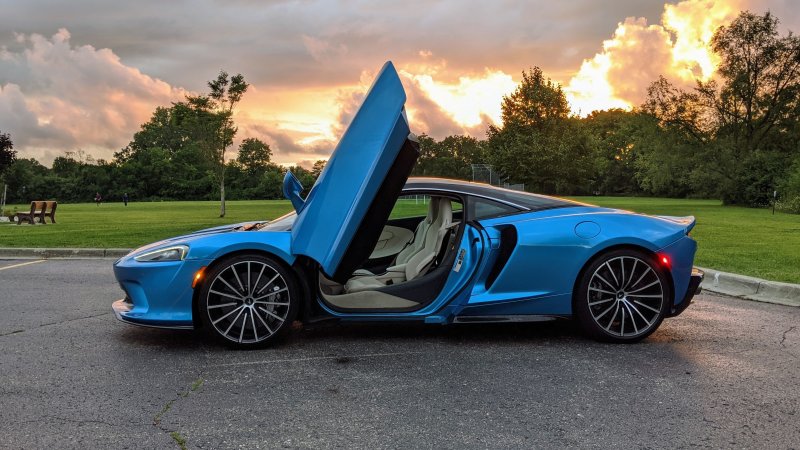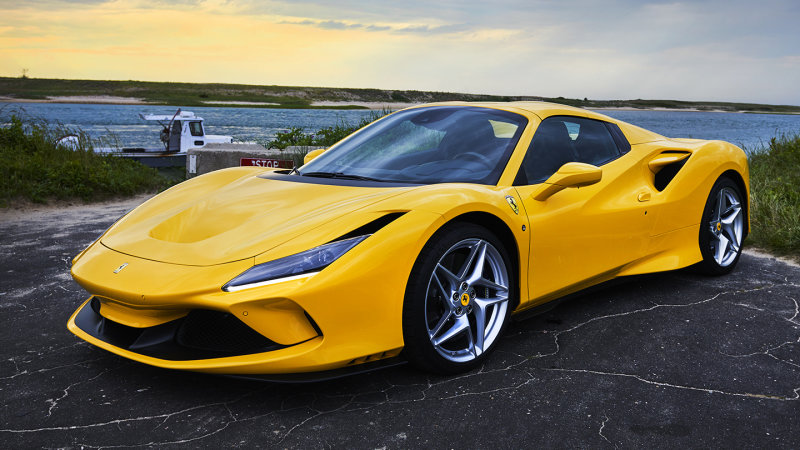The Mercedes A-Class has been thriving in Europe since 1997 as a small, rather upright and plain-looking hatchback. The fourth generation of the car finally comes to the United States early next year, with a considerably improved sedan profile that will fit in nicely with the rest of the lineup. Like the entry-level CLA coupe and GLA crossover before it, the A-Class is meant to entice new buyers to the brand, lowering the barrier to entry without compromising a sense of mystique that the Mercedes badge brings to the driveway.
The Good: The A-Class has typically Mercedes-like tight construction and build quality. It’s also got terrifically low road and wind noise, thanks to its stellar coefficient of drag, and fully competent handling. The new infotainment system is the best on the market right now, folding in augmented reality and artificial intelligence for the first time in a car in a truly meaningful way.
Who It’s For: Mercedes makes no bones about the fact that the A-Class is meant to be a new gateway to the brand for young professionals, hopefully luring as many away as possible from similar entry-level luxury models on the market. Its brand strategy aside, I think the car’s for anyone who would simply want a well-equipped, attractive small car no matter what their demo happens to be.
Watch Out For: It won’t take much effort to turn what will likely start as a $30,000 car — the price isn’t disclosed yet — into a nearly $50,000 car, once you start ticking off the boxes. That’s to be expected, though, and ultimately it’s probably still worth it to most buyers. Also, despite being highly intuitive, systems like MBUX still require a bit of configuration and a few days grasping their logic and their own preferences for how they like to be used. There’s a lot going on in this car, even beyond MBUX, so there’ll be a learning curve.
Alternatives: Prediction: Entry-level luxury will be the new premium battleground. Given that Mercedes rolled out the new MBUX entertainment system in their most affordable product, that could prompt other companies to start introducing top-shelf tech farther down the lineup to draw in younger buyers. The A-Class’s closest competitors:
• Audi A3 (starting at $31,950)
• BMW 3 Series (starting at $34,900)
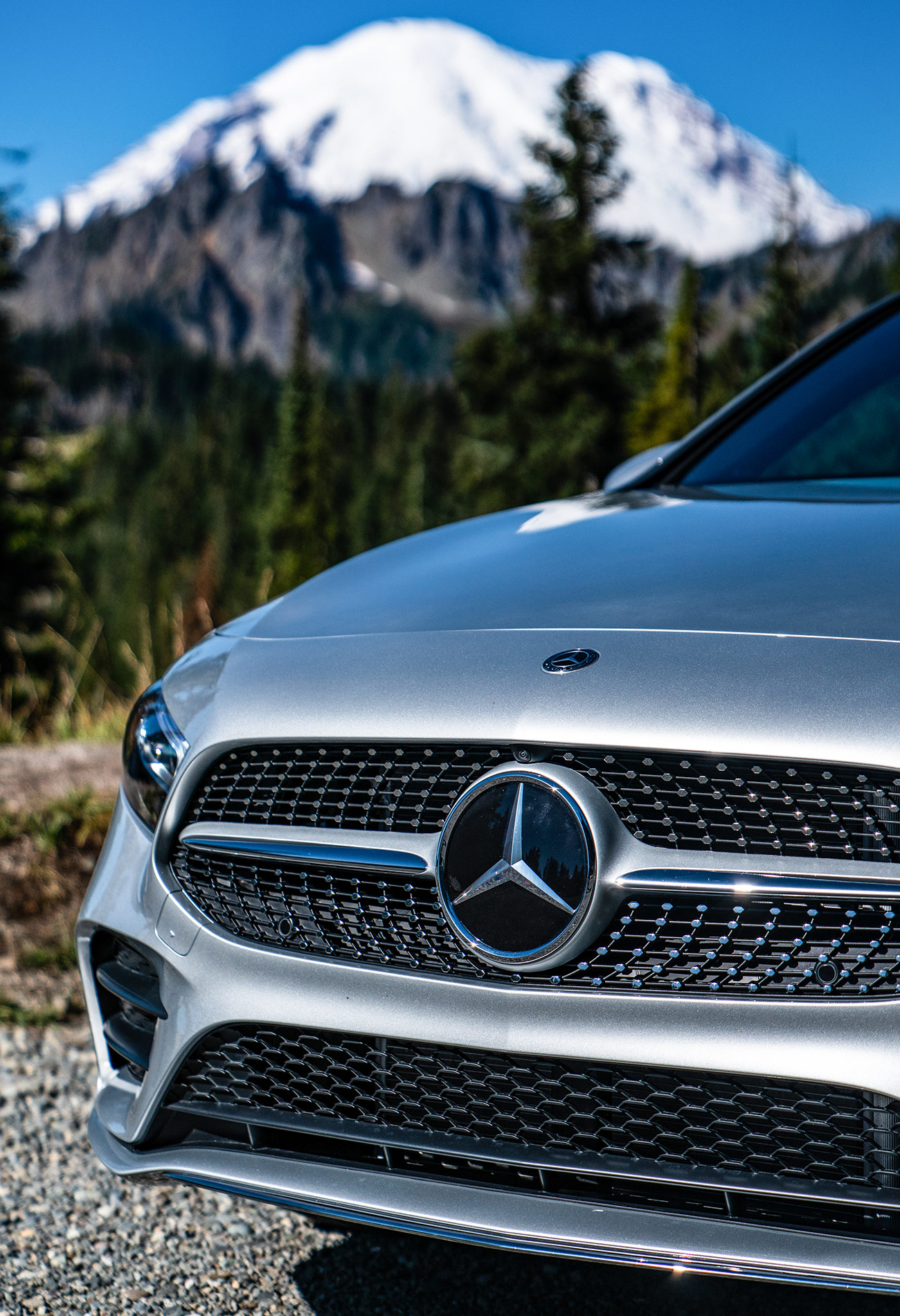
Review: My first instinct while driving the A-Class around Seattle and Mt. Rainier was to compare it to the new Volkswagen Jetta. They’re essentially the same idea, approached with a similar aesthetic: a small, modern sedan infused with solid German engineering, though one leans economy and one premium. This pattern exists in every vehicle on the road, of course, since every model has counterparts as competitors both up and down the spectrum. But I settled on the Jetta because it’s also new, I had recently driven it and I deemed it an exceptionally good redesign. The heart of my question was whether, if I closed my eyes while driving the A-Class (a move I don’t really recommend) would I actually be able to tell the difference?
Since the answer isn’t remotely surprising, I’ll skip the drama: Yes, you’ll be able to tell the difference. Sometimes premium alternatives are just window-dressing: nice leather, design tweaks and, say, navigation. But that gap is closing as more economy cars increasingly have more premium features, a trend that parallels the trend, noted earlier, of entry-level premium cars getting those goodies some time ahead of the big mac-daddy flagship vehicles. (In this case, the MBUX infotainment system rolling out in the A-Class rather than a GLS-Class SUV or S-Class sedan.) But other times the jump from a $25,000 Jetta (options maxed out) to a base, $30,000-ish A-Class is much more. That’s the case with the A-Class. It’s not the equivalent of a nicely appointed economy car being positioned as a Mercedes when everyone knows it ain’t. The A-Class commends itself to the title of a true MB.
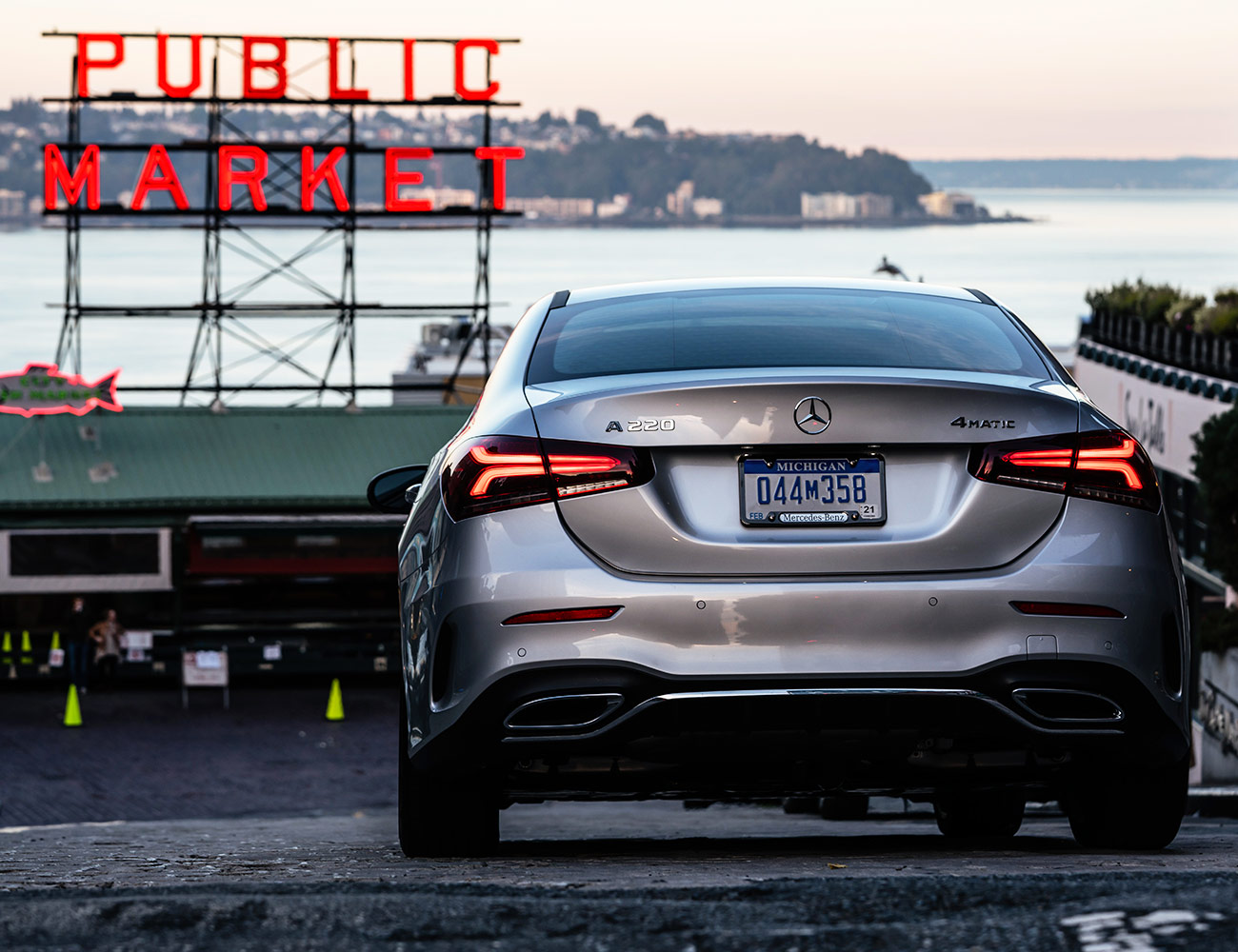
The reasons (i.e. the things you notice behind the wheel) have to do with deep-tissue engineering and the bumper-to-bumper design of the vehicle. It’s far quieter than an equivalent economy car, thanks to its advanced sound-deadening strategies and its exceptionally good aerodynamics. (The European-spec model set a new record for coefficient of drag, at 0.22. The U.S. version is just a bit above that.) It also handles better because of its advanced suspension tuning and the stiffness and rigidity that Mercedes has so much experience with. At the pedals, you feel the dual-clutch transmission smoothly managing the 188 hp and 221 lb-ft of torque, to the Jetta’s 147 hp and 184 lb-ft, delivered through a conventional automatic. So it’s far more motivated in the performance department.
But the A-Class uses those qualities as mere starting points, continuing on to bury higher-end economy underlings and its direct competitors in the luxury market. This comes down to a few additional elements, beginning with MBUX. The new infotainment system, a ground-up user interface design deployed in a system powerful enough to handle its dynamic graphics with ease, deploys artificial intelligence to grasp your natural-language queries and commands and augmented reality to spice up the navigation experience. It also goes a few extra steps to allow users to make fairly complex queries, such as asking for restaurants in certain categories but with bonus criteria (“not downtown,” for instance, or “more affordable”). It’s in direct competition with Siri and Alexa in this respect, but it doesn’t risk overlapping utility and there’s no “ecosystem investment” that you’re betraying by asking your car for recommendations instead of your usual go-tos. Plus, of course, you have immediate integration into the car’s navigation. It’s all nicely packaged up, modern and engaging. It’s fun to use. Throw in the optional semi-self-driving capabilities that have trickled down to its level, and you also have a car that’s relaxing and unstressful to drive when you need it to be.
But it’s also fun to drive when you want it to be, in a way that larger and heavier cars tend not to be. It’s tossable, without feeling unsteady. Finally, it’s fun to be in even sitting at stoplights, thanks to its sharp design both inside and out. It’s always baffled me that more expensive cars tend to be better designed, since there’s plenty of talent to go around and only so many car companies, but it’s true, and entirely visible in the A-Class. It looks right and as a result, feels right. It hasn’t lost the playful energy of the perpetual kid brother, which it will shoulder throughout its life, but it’s absolutely a grown-up’s car in every dimension.
Verdict: With the stellar MBUX system and marching orders to expand the brand’s base, the A-Class offers, in the end, a terrific value: industry-leading tech packaged up with all the creamy goodness that is the Mercedes experience. This isn’t a bargain-basement product; it’s a proud addition to a strong lineup.
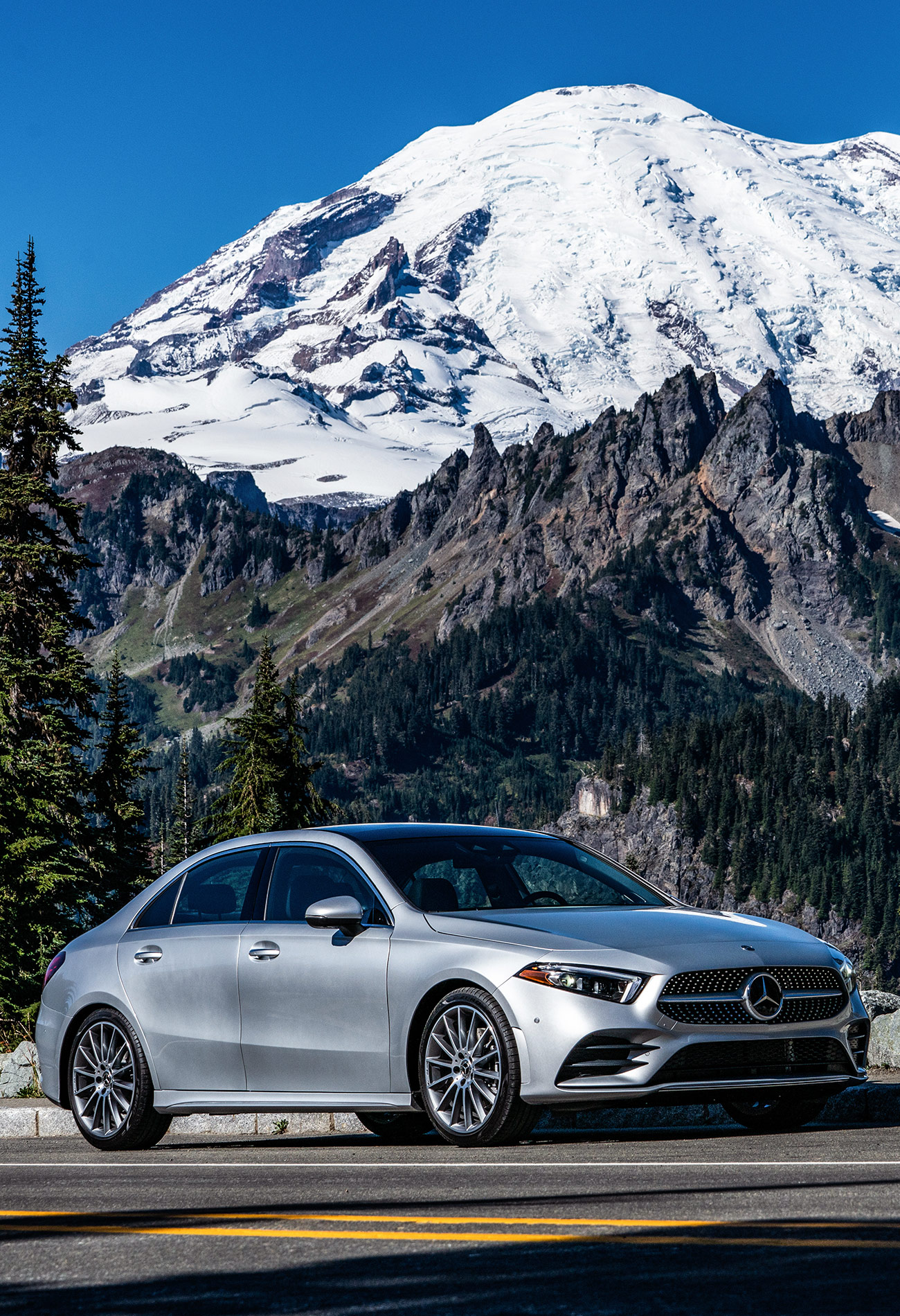
What Others Are Saying:
• “The A-Class is in many ways a more compelling option than the larger C-Class. It’s arguably more attractive, just as nice to drive and offers a more robust in-car tech experience with cabin appointments that are still properly befitting of a Mercedes-Benz. It’s what the CLA-Class should have been all along. It won’t carry that sub-$30,000 price point, but make no mistake, you’ll get what you pay for.” — Steven Ewing, Roadshow
• “This is the best-riding small Mercedes yet, even on the larger 19-inch wheels and tires. The wheel control and damping is excellent, and the car shrugs off expansion joints and misaligned slabs on the highway with a composure the current CLA could never muster; the structure feels a good deal more rigid than that of the CLA, too. Our cars had upgraded cross-drilled brake rotors, and, well, they stopped fine.” — Erik Johnson, Autoweek
• “If you’re in the younger age bracket and the prospect of owning a car as luxurious and feature-rich as a Mercedes-Benz seems impossible, that prospect might now be able to become a reality. While the A-Class is the company’s most affordable model, that doesn’t mean it feels cheap in any way. Rather, it feels like the premium product that it is.” — Chris Chin, Digital Trends
2019 Mercedes A 220 4MATIC Sedan Key Specs
SPEC1: turbocharged 2.0-liter inline-four
Transmission: seven-speed dual-clutch
Horsepower: 188
Torque: 221 lb-ft
Top Speed: 130 mph
Hot takes and in-depth reviews on noteworthy, relevant and interesting products. Read the Story




